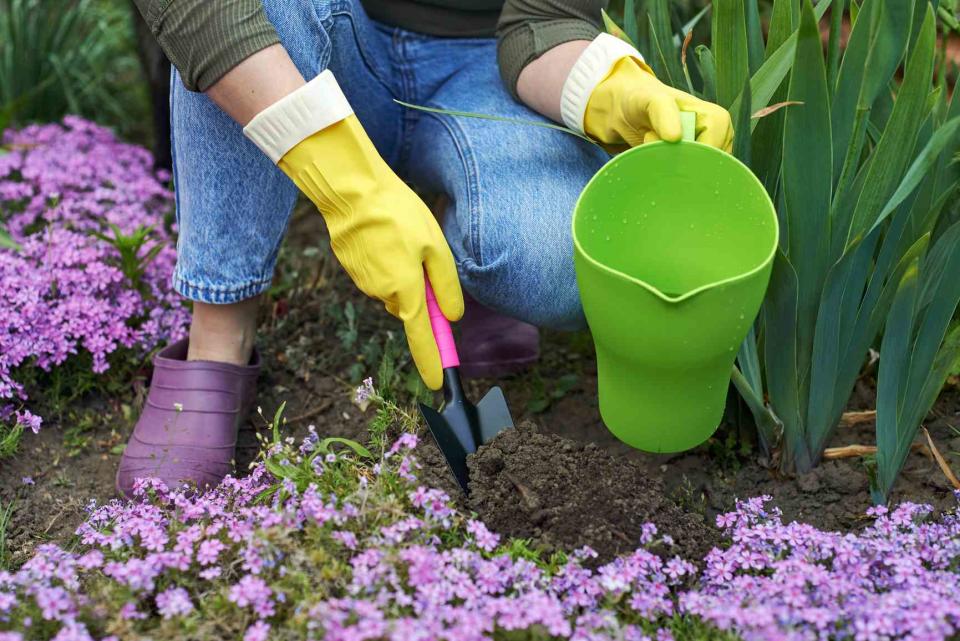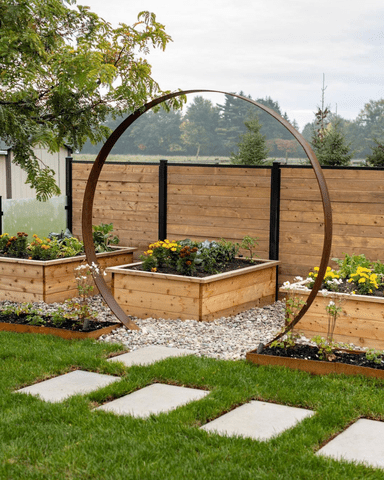6 Tried-and-True Tricks Longtime Gardeners Swear By
Try these expert-approved methods in your garden this season

Yaroslav Danylchenko / Stocksy
Whether you’re just getting started on your spring and summer garden or you’ve been planting and pruning all winter, some gardening advice is always welcome. It often feels like the tricks, tips, and hacks for helping your outdoor plants thrive are endless—and for every great piece of advice, there are some really bad suggestions out there, too.
With this in mind, we turned to the experts to find out some tried-and-true growing tricks they swear by. Here’s what they had to say.
Companion Planting Works Wonders
If you’ve ever heard of the concept of ‘companion planting,’ then Nikhil Arora, co-founder of the organic plant product company Back to the Roots, says you’re on the right track. For those unfamiliar, Arora explains that companion planting is the act of grouping mutually beneficial plants together so they can assist one another in growing.
“One of the most effective gardening tips is to use companion planting,” Arora says. “For instance, planting marigolds around tomato plants can help deter pests, while planting beans alongside corn can improve soil fertility by fixing nitrogen."

Don't Be Afraid to Prune Your Plants
Even if you’re going for a trendier, wildflower meadow aesthetic this season, Katie Tamony, CMO and trend spotter for gardening brand Monrovia, says pruning is an absolute necessity—but for some reason, it’s something people often find scary.
“Pruning results in thicker, denser growth in spring and more blooms, plus a healthier overall plant,” Tamony says. “It’s something I learned from watching our craftsmen do it often at our nurseries. Don’t be afraid to prune! Especially with your perennials and shrubs—give everything in your garden a great haircut before the season starts.”
Give everything in your garden a great haircut before the season starts.
Use Eggshells to Fertilize Soil
If you’ve ever heard that eggshells make great fertilizer, don’t dismiss it as a silly tale. Arora tells us there’s some truth to it. He notes that crushed eggshells can add calcium to the soil, which is essential for plant growth and development.
In general, Tamony says people underestimate the importance of healthy soil, and says if your garden isn’t growing as expected, that might be the first thing to investigate.
“There’s no point planting in terrible soil—the plant roots won’t take hold, the plant won’t get needed nutrients, and you will watch your plant suffer for it,” she says.
Not sure if your soil needs a boost? You can easily run an at-home test, available at a local garden center or online, according to Tamony. Then, once you have your results, treat according. “Don’t just amend the soil in the planting hole—you need to amend the soil around the plant and throughout your garden,” Tamony says.

Make a "Compost Tea"
This one sounds kind of stomach–churning for us, but our plants will love it. Arora assures us that ‘compost tea’ actually works. And yes—it’s exactly what it sounds like.
“Compost tea is made by steeping compost in water,” Arora says. “The resulting liquid is rich in nutrients. It can be used as a natural fertilizer, it’s really easy to apply, and it’s readily available to your plants."
Use Raised Beds
Raised beds aren’t just trending for their appearance—they’re a great way to add levels and visual interest to your outdoor space. Plus, Arora says they actually do help your gardens grow.
“Raised beds allow for better drainage, and soil aeration, and can prevent soil compaction,” Arora says. “It also makes it easier to control weeds and pests."

Dig Wide Rather Than Deep
Whether you’re planting in a raised bed or in the ground, Tamony says there’s a misconception about how to dig your hole: it's more about the width than the depth.
“Many people think they need to dig a hole much deeper than the plant, but they really need to dig a hole that’s twice as wide as the plant in the pot—the roots will spread out and explore the surrounding area after planting,” Tamony says.
Then, once your plant is in place, make sure you refill the hole correctly. Tamony says, “Don’t bury the plant—fill the planting hole so that the rootball or crown is at soil level.”
Read Next:20 Gardening Hacks to Help You Get Growing, Approved by Experts

